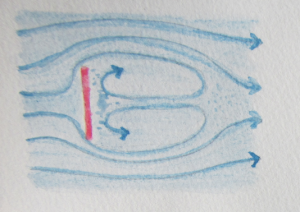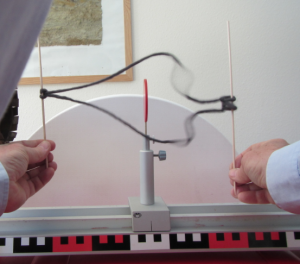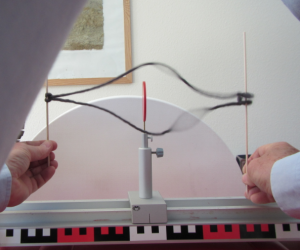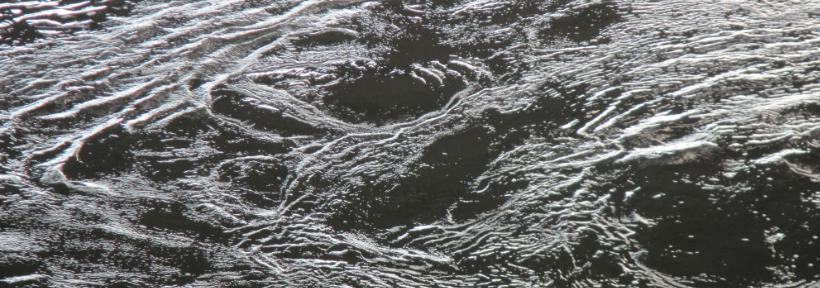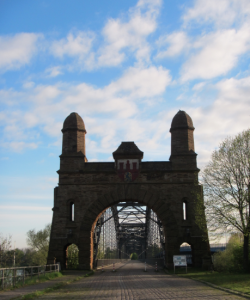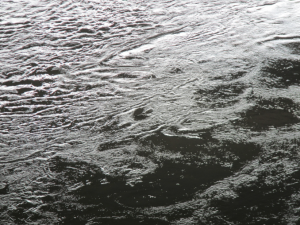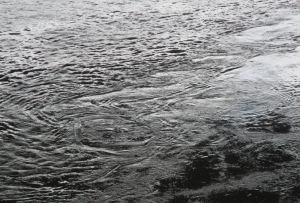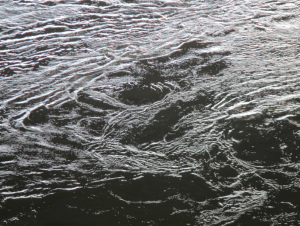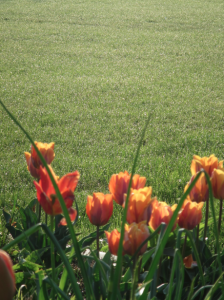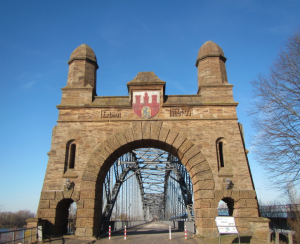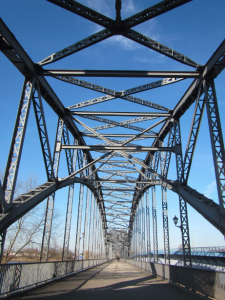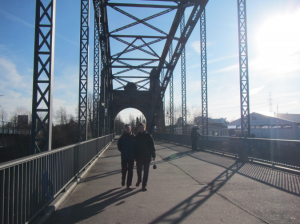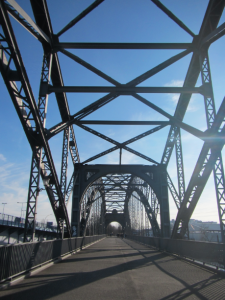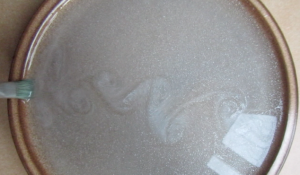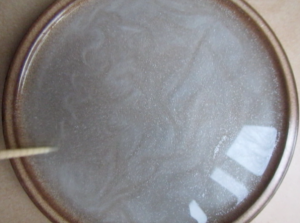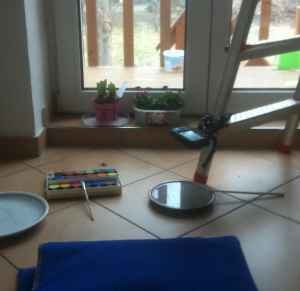Whenever I’m in a canoe or kayak, I love watching the two eddies that form behind the paddle when you pull it through the water. It looks kinda like this:
Instead of pulling a paddle through more or less stagnant water, we could also use a stationary paddle in a flow. And that is the setup I want to discuss today: A stationary, round paddle perpendicular to an air flow.
A very cool feature of the paddle – which we know has to exist from the sketch above – is shown below: There is a point somewhere downstream of the paddle, where the direction of the air flow changes and a return flow towards the paddle starts. You can see that the threads on the stick I am placing in the return flow go partly towards, partly away from the paddle. So clearly the stick is in the right spot!
Another visualization that my dad came up with below: Threads are pulled back towards the paddle in the return flow.
Doesn’t it look awesome?
Another way to visualize the change in flow direction is to take a rotor and move it from far downstream of the paddle towards the paddle and back.
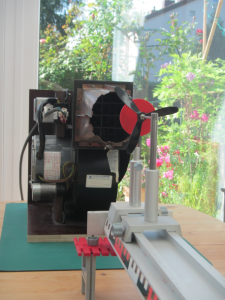
Visualizing the change in flow direction by moving a rotor towards and away from a paddle blocking an air stream
All of this is shown in the movie:
Don’t you wish you had all this stuff to play with? :-)
(And do you now understand why I was so excited about the diving duck? :-))
